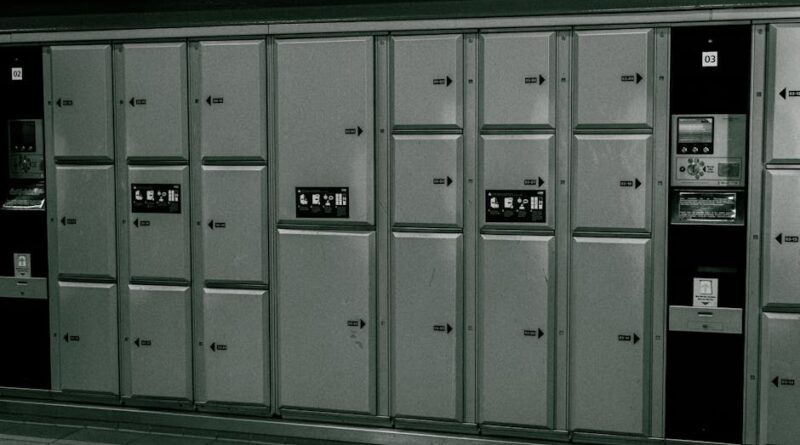The Basics of Public Key Infrastructure
Have you ever wondered how your online transactions stay secure? You might think it’s magic, but it’s not. The secret lies in something called Public Key Infrastructure, or PKI for short. This system helps keep your information safe when you’re online. Let’s dive in and understand how it all works!
What is Public Key Infrastructure (PKI)?

Public Key Infrastructure is a framework that uses a pair of keys to secure data. One key is public, and the other is private. Think of it like a mailbox. Anyone can drop a letter in (the public key), but only you have the key to open it (the private key). This system allows people to send secure messages and conduct online transactions without fear of prying eyes.
How Does PKI Work?

PKI works through certificates and keys. Lets break it down:
- Public Key: This key encrypts your messages. Anyone can use it to send you secure data.
- Private Key: This key decrypts the messages sent to you. You keep it secret and safe.
- Digital Certificates: These are like your online ID card. They confirm that a public key belongs to a specific person or organization.
Heres a simple example: When you visit a bank’s website, your browser checks it’s digital certificate. If it’s valid, you can trust that you are communicating with the real bank, not an imposter.
Why is PKI Important?

PKI is crucial for many reasons:
- Security: It protects sensitive information, like your credit card details.
- Authentication: It verifies identities, ensuring you’re dealing with legitimate entities.
- Integrity: It ensures that your data hasn’t been altered during transmission.
In a world where cyber threats are rampant, PKI acts as a strong shield. According to a recent study, 60% of small businesses experience cyber attacks every year. With PKI, you can help protect yourself from these threats.
Common Questions About PKI

How are Keys Created?
Keys are created through a process called cryptography. This is like a secret code that keeps data safe. When you create your own keys, they are generated using complex mathematical algorithms. This ensures that only you can use your private key.
What Happens if I Lose My Private Key?
it’s crucial to keep your private key safe. If you lose it, youll lose access to any encrypted data. Imagine losing the key to your houseit’s a similar situation. You might need to reset your account and get a new key. Always back up your private key in a secure place!
Components of PKI
PKI consists of several key components that work together:
- Certificate Authority (CA): This is the trusted entity that issues digital certificates. Think of it like a notary public for the internet.
- Registration Authority (RA): This verifies the identity of users before they get a certificate. It acts as a gatekeeper.
- Repository: This is where certificates are stored and made available. it’s like an online library of certificates.
- End-user Devices: This includes computers, smartphones, and other devices that use PKI for secure communications.
Each of these components plays a vital role in ensuring the security of online interactions.
Everyday Uses of PKI
Now, you might be wondering where PKI is used in your daily life. Here are some common applications:
- Online Banking: When you log into your bank account, PKI keeps your data safe from fraud.
- E-commerce: Websites use PKI to secure your credit card information when you shop online.
- Email Encryption: PKI helps encrypt sensitive emails, ensuring only the intended recipient can read them.
Every time you enter personal information online, you can bet that PKI is working behind the scenes to protect you.
Understanding Digital Certificates
What is a Digital Certificate?
A digital certificate is a file that verifies the identity of a person, organization, or device. It includes the public key and information about the owner. Just like a drivers license proves who you are, a digital certificate proves ownership of a public key.
How Do I Know If a Website is Secure?
Look for a padlock symbol in the address bar of your browser. If you see this, it means the website uses a digital certificate to secure your connection. Always double-check that the URL starts with “https://” instead of “http://”. The “s” stands for secure.
Common Misconceptions About PKI
Many people have misunderstandings about PKI. Lets clear up a few:
- PKI is Only for Big Companies: Not true! Small businesses can also use PKI to protect their data.
- PKI is Too Complicated: While it sounds complex, many services provide easy-to-use PKI solutions.
- PKI is Foolproof: No system is perfect! Users still need to practice good security habits.
By addressing these misconceptions, we can help more people understand and use PKI effectively.
Conclusion: Taking Action with PKI
Understanding Public Key Infrastructure is crucial in todays digital landscape. It helps protect our data and maintain trust online. Here are some actionable takeaways:
- Stay Informed: Learn about cybersecurity best practices.
- Use Secure Websites: Always check for the padlock symbol when browsing.
- Backup Your Keys: Keep a secure copy of your private key.
By implementing these steps, you can help safeguard your information. Remember, in the digital world, knowledge is power. Take control of your online security with PKI!
For more information on cybersecurity, check out the National Institute of Standards and Technology (NIST) here.



